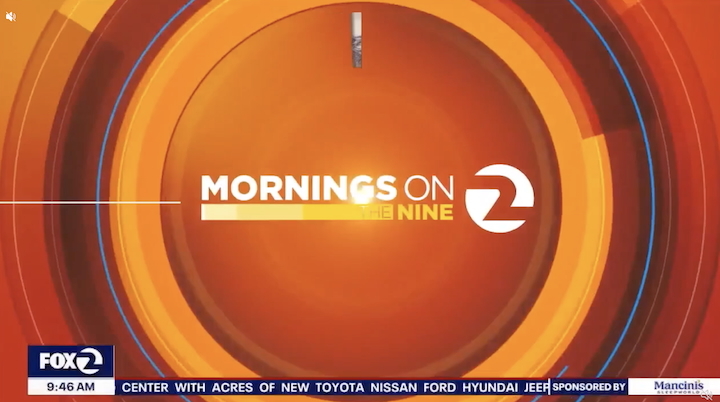High School Counselor Week
Weekly stories, facts, trends, and other information from around the country
January 9, 2025
A looming ‘demographic cliff’: Fewer college students and ultimately fewer graduates
NPR – January 8, 2025
This “demographic cliff” has been predicted ever since Americans started having fewer babies at the advent of the Great Recession around the end of 2007. Demographers say it will finally arrive nationwide in the fall of this year. That’s when recruiting offices will begin to confront the long-anticipated drop-off in the number of applicants from among the next class of high school seniors. But the downturn isn’t just a problem for universities and colleges. It’s a looming crisis for the economy, with fewer graduates eventually coming through the pipeline to fill jobs that require college educations.
Tuition has fallen significantly at many colleges, research indicates
ABC News – January 8, 2025
The cost of college keeps spiraling ever higher, right? Not necessarily. New research indicates students are paying significantly less to attend public universities than they were a decade ago. And tuition increases at private colleges have finally slowed after years of hefty rises. Figures compiled by the nonprofit College Board indicate the average student attending an in-state public university this year faces a tuition bill of $11,610, which is down 4% from a decade earlier when taking inflation into account. But the real savings come in what the average student actually pays after getting grants and financial aid. That’s down 40% over the decade, from $4,140 to $2,480 annually, according to the data.
Schools Spend Millions on a Safety Measure to Stop Bullets. It Doesn’t Work.
MSN – December 22, 2024
The Wall Street Journal found that more than $100 million has been spent for the purchase and installation of window film at school districts nationwide. The film is attractive to school officials because it is a fraction of the cost of bulletproof glass. Window-film dealers who sell to school districts claim their product is the answer to school shootings, cashing in on false or exaggerated claims of ballistic protection. While window film can slow down attackers trying to shoot their way in, numerous field tests show it is hardly an effective bullet stopper altogether, and would have failed to prevent the fatal shooting in Madison this past month.
 Why did I get wait-listed or deferred?
Why did I get wait-listed or deferred?Post – December 19, 2024
College Advice & Timely Tips with Lee Bierer
Which Of America’s Top Colleges Limit AP And IB Course Credit?
Forbes – December 23, 2024
Americans can reduce the cost of tuition in various ways, but among the most popular is earning course credit for work done before finishing high school. Students who successfully complete AP or IB courses in high school could save anywhere between 12.5% and 25% of the total cost of the degree. However, a recent study looked at which of the top 150 colleges and universities were the most and least generous when awarding advanced college course credits. The data makes clear that many institutions of higher education place limits on the use of AP and IB credit toward a degree, thus curtailing ways that students can save. More than half of the 150 schools surveyed cap the total amount of credit students can apply to their degree, in some cases at levels just below the number needed to finish a semester or two early. Seventy-five don’t accept scores in all subject areas, and almost half have hiked the minimum score to earn credit.
Opinion: Parents have way more influence than they realize in shaping their children’s success
The Hechinger Report – January 7, 2025
Parents can be tricky for administrators to manage. They love their kids dearly, but the way that love gets expressed to school leaders can sometimes be less than constructive. But parents aren’t powerless. They have way more influence than they — and administrators — realize, especially when it comes to disengaged students. So, school leaders who are struggling with disengaged students don’t have to try and turn things around all on their own. Partnering with parents can help. Here are three easy strategies.
Report: Kids Check Out of School as They Get Older, and Parents Are in the Dark
The 74 – January 6, 2025
American parents are far more bullish about the quality of learning in schools than their kids, according to a new report from the Brookings Institution. While substantially less than half of all high schoolers say that they believe they’re learning a lot each day, over 70% of parents say they are. The figures point to a failure not only to keep students engaged in school, but also to keep families informed about the true state of their children’s learning.
 Expert advises how to navigate the college decision process
Expert advises how to navigate the college decision process
MSN – January 7, 2025
As high school seniors continue to receive their early decision and early action notifications there are several things students and parents need to know before they make one of the biggest decisions of their lives. From negotiating financial aid offers, to making the most of virtual accepted students days, Eric Sherman of IvyWise provides tips on navigating the college decision process.
How To Use College Admissions Tours To Unlock Hidden Insights
Forbes – January 4, 2025
For students navigating the college admissions process, tours are a valuable opportunity to learn about schools in a way that brochures and websites simply can’t convey. But there’s a common mistake: students attending tours without a plan and let their parents take the lead. The result is a missed opportunity to gain the insights they need to determine if a school is truly a good fit. In this guide, I’ll share how students can take control of their college visits, ask game-changing questions, and walk away with clarity and confidence about where they want to apply.
The Movement Against Legacy Admissions Is Expanding to More States and Universities
Teen Vogue – January 2, 2025
There’s a growing movement by state legislatures and institutions to do away with legacy admissions, with California recently becoming the second state, after Maryland, to pass legislation banning the practice at private and public universities. A 2022 Pew Research Center survey found that 75% of Americans believe legacy status should not be a factor in college admissions. They argue that ending the practice will expand opportunities for all students, a move they say is increasingly urgent in the wake of affirmative action’s demise.
I was a low-income student, so college never seemed feasible. That changed when I took a college class as a high schooler.
Business Insider – January 1, 2025
As a low-income student, I didn’t think college was for me. I then enrolled in a college class as a high schooler, and it changed everything. I was side-by-side with college students and gleefully joined freshmen for an introductory English class. The professor was nice and supportive, and the process demystified college for me. Assignments that initially sounded intimidating, like papers and finals, weren’t so different from my high school classwork. Most importantly, this opportunity gave me the confidence as a low-income student to realize that I could handle college classes. It also exposed me to new ways of living. I was integrated into a community that highlighted different realities for me.
Should the U.S. Regulate Cost of Attendance?
Inside Higher Ed – January 8, 2025
For nearly four decades, the federal government had no authority to regulate cost of attendance, a figure calculated by colleges and universities that estimates how much a student will pay to attend the institution. COA, which includes tuition and course materials as well as living costs like housing and food, impacts how much aid a student can receive, meaning miscalculations can have major consequences for a student’s ability to go to college. But a provision in the FAFSA Simplification Act passed in 2020 reversed that restriction, allowing the Education Department to begin regulating cost of attendance if it so chooses. Now, advocates for college affordability and basic needs access are calling on the department to take advantage of that power.
What do FAFSA completion rates look like post-pandemic?
Higher Ed Dive – January 8, 2025
Recently, researchers at The Century Foundation looked closely at completion rates for the FAFSA and cataloged some surprising trends. Among them: Completion rates for low-income students have mostly rebounded after dips seen during the pandemic, while completion rates for most other income groups have declined. Middle-income students, in particular, still have lower completion rates than they did pre-pandemic. While reaching middle income families remains a difficult problem to solve, the rebound of FAFSA completion for low-income students and families is a promising signal for policymakers who have been trying to get those rates up.
Subscribe to our Weekly Emails
2025 Update: Scholarships for Juniors
sponsored by Fastweb
Best scholarships for the class of 2026.
2025: The Year I Get It Together (Maybe)
Tufts University Undergraduate Admissions – January 5, 2025
We’ve all been there: January 1st rolls around, and suddenly we are “totally” going to stick to a workout routine, get organized, or finally do that project we’ve been putting off. Then, by mid-January, we are less excited and back to our same old ways. But hey, it’s 2025. New year, new me? This year might be the one where everything falls into place. Or, at least you know we can try. Will I get it totally right this year? Probably not, but if I can learn from my mistakes in 2024, step out of my comfort zone and make it through 2025 without totally stressing out, I call that a win.
Mental health crisis demands greater coordination between schools, pediatricians
K-12 Dive – January 8, 2025
Higher demand for youth mental services — along with shortages of youth behavioral specialists — point to a greater need for local, state and federal collaboration and policy change, according to a report released Tuesday by the Bipartisan Policy Center. The report recommends the U.S. Department of Education, along with other federal agencies, should provide guidance and technical support for youth crisis response across various settings, including K-12 schools, higher education, homes, and military and community settings.
How does exclusionary discipline affect student mental health?
K-12 Dive – January 3, 2025
Students who are suspended or expelled can experience elevated rates of depression through their teen years and into early adulthood, according to research from sociologists at the University of Arkansas. Previous studies connect suspensions and expulsions to a range of poor academic outcomes, such as lower standardized test scores and graduation rates. But this study provides new insights into the impact on long-term mental health patterns.
What is ‘Super-scoring’ on the Digital SAT?
EduretiX – January 6, 2025
Imagine you’ve taken the SAT twice (or maybe even three times—no judgments!). On one test, you crushed the Math section, but the Reading and Writing section didn’t go so well. On another test, your Reading and Writing score soared, but Math? Not so much. Super-scoring comes to the rescue! Instead of looking at just one test date, schools that accept super-scores will combine your highest section scores across all test dates. It’s like cherry-picking your best performance to create a mega-awesome SAT score. Here’s an overview of super-scoring, as well as some schools that do and don’t allow you to take advantage of it.
Shut Out: High School Students Learn About Careers — But Can’t Try One That Pays
The 74 – January 8, 2025
Providing high school students a chance to try out possible careers has become a growing focus for families, public officials, schools and even businesses the last several years. But all work opportunities aren’t created equal. There’s a hierarchy of experiences that rise in commitment, intensity and benefit for students and providers — with career days and job fairs at the low end. At the top end are internships, where students work with adults; and apprenticeships, longer programs where students are paid to work and earn career credentials. The best estimates available suggest five percent of students or less have the chance for said apprenticeships or interships, which are widely considered to be the gold standard of work experiences.
How Emerging Edtech Can Expand Learning in CTE
EdTech Digest – January 7, 2025
The rise in mixed perspectives on higher education opens the door for more career and technical education (CTE). However, the hands-on teaching methods, physical space requirements and access to tools and equipment for CTE courses create a hurdle that many educators find insurmountable. New breakthroughs in edtech–like virtual reality-based simulations, AI-powered curriculums and online learning platforms–could be the solution that educators are looking for. Here’s how digital learning environments can bring firsthand learning to students through virtual and remote means.



